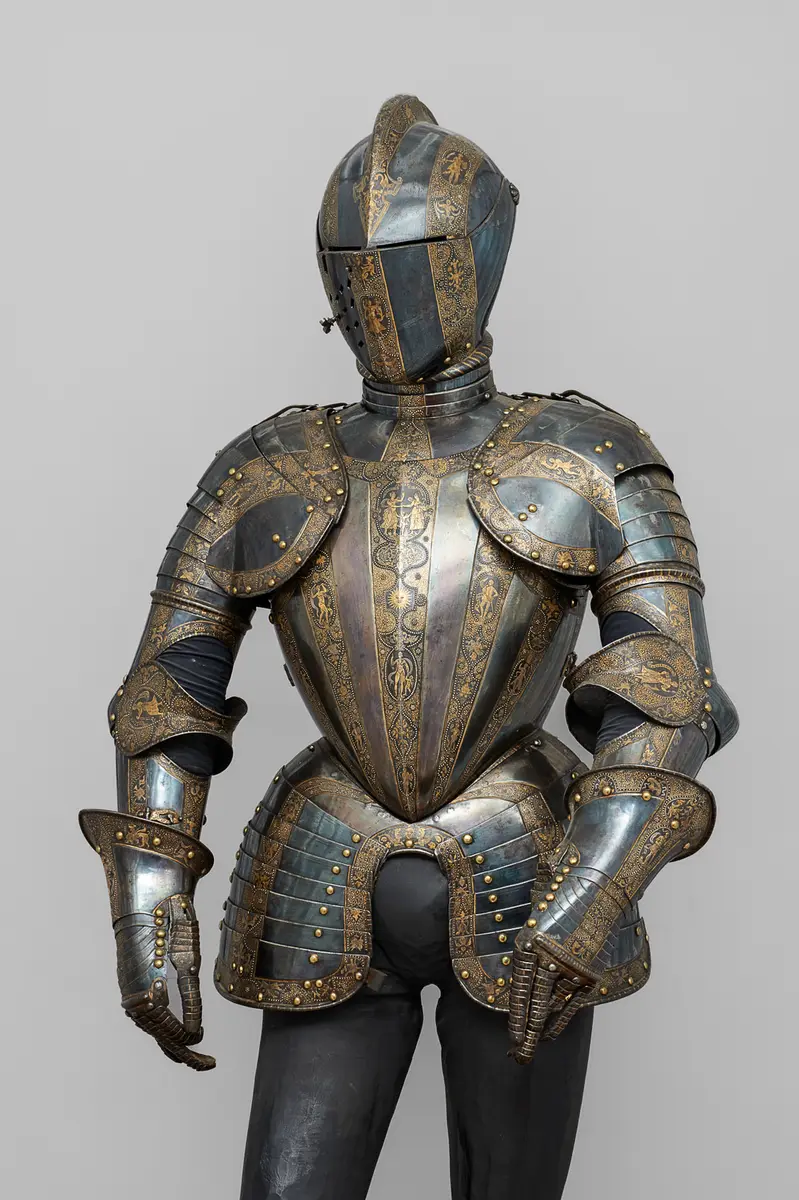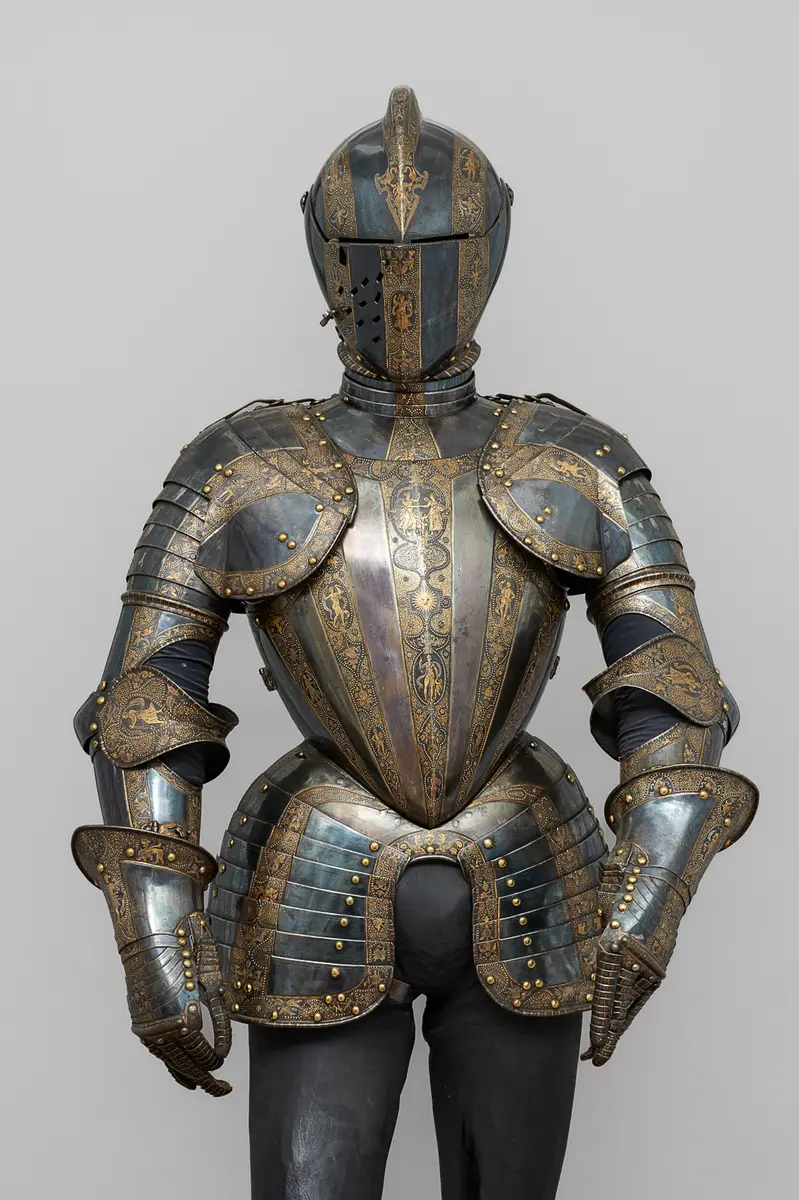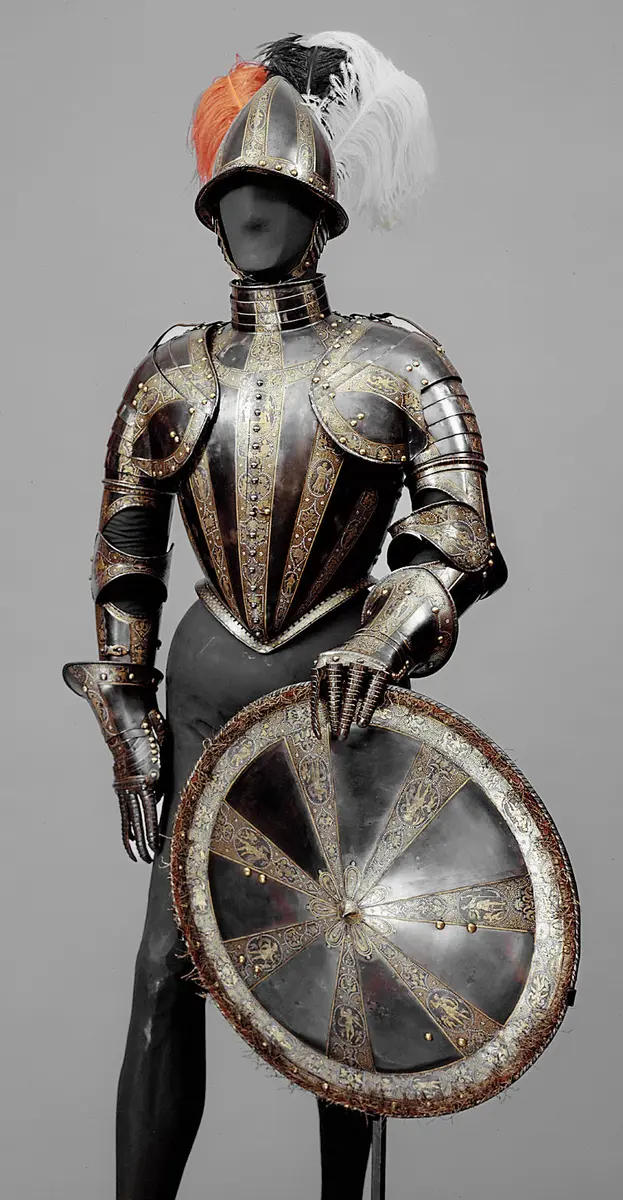Besitzer/in:
Don Juan de Austria , ill. Sohn des Karl V. von Habsburg (1547 - 1578) DNB
Zeit:
um 1575
Objektbezeichnung:
Halbharnisch
Kultur:
Mailand
Material/Technik:
Eisen geschmiedet, getrieben, gebläut. Dekor: teils mit Gold, Silber, Silberperlen tauschiert, teils graviert, teils punziert. Nietkappen, Riemenzungen: Messing, teils feuervergoldet. Schnallen, Visierbolzen, Flügelmutter: Eisen, teils mit Gold tauschiert. Scharniere: Eisen, teils geätzt, teils feuervergoldet. Federhülse: Messing, feuervergoldet, teils graviert. Leder.
Bildrecht:
Kunsthistorisches Museum Wien, Hofjagd- und Rüstkammer
Inv. Nr.:
Hofjagd- und Rüstkammer, A 1048


